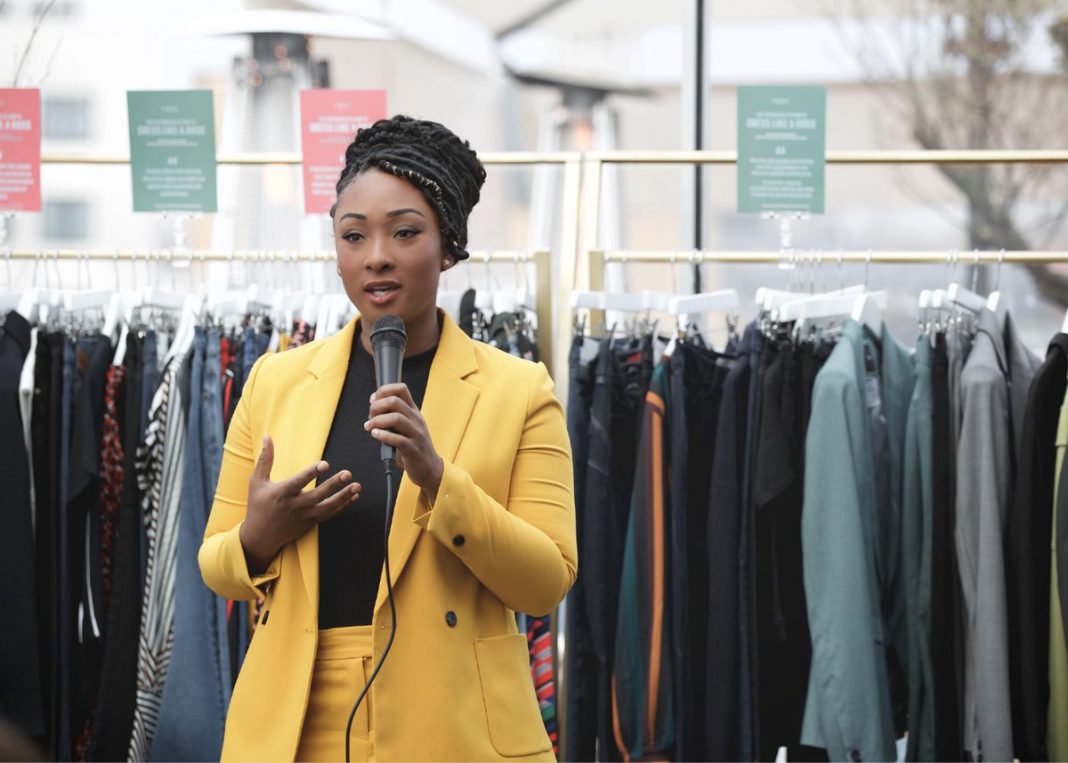
Shakaila Forbes-Bell, founder of Fashion Is Psychology, giving a talk at the #dresslikeaboss Next … [+]
John Hylton
Fashion is more than a statement. It’s a form of communication. A person’s style is a form of self-confidence and what they stand for, whether or not they realize it. Fashion psychology encompasses how individuals perceive or judge one another, one’s identity or personality, buying motivators and market research on consumer behavior.
Shakaila Forbes-Bell, founder of Fashion Is Psychology (FiP), assists companies in identifying how to create better consumer experiences for their customers through the psychology of fashion.
FiP fosters the growth of research into the fashion industry, incites positive change and offers a new understanding into a business that consumes a large part of everyday living. Forbes-Bell’s partnerships include Afterpay, Next and Sainsbury’s. She takes the data collected by the brand on consumer behaviors, patterns and trends and helps them look at the why behind the what; helps them understand the motivations behind certain purchases and motivations.
“When you start adding meaning to certain clothing, you embody that,” Forbes-Bell explains. “People do that when they wear certain clothes in a lot of different situations, specifically in the working environment. … Subconsciously, they wear clothes to help them navigate different situations, help them embody specific trades, help them feel more confident, happier, or even more comfortable. A lot of times, that kind of decision and that motivation is operating below levels of consciousness.”
Forbes-Bell’s interest in social psychology led her to research the intersection between clothing and race during the first wave of Black Lives Matter after the murder of Trayvon Martin. News outlets commented on Martin’s hoodie and how Black men have to dress a certain way to be portrayed differently. She was able to further her study through her master’s program.
“It’s very interesting that there are associations that you have, especially like across racial lines as well,” she explains. “For a lot of ethnic minorities, you grow up to think, ‘Look your absolute best. You have to dress as an authority.’ You have to overcompensate by making yourself look extremely presentable. But then you look at all of these white Silicon Valley kinds of guys, and they’re seen as almost the pinnacle of success and their wardrobe is hoodies and t-shirts. That’s a status symbol in itself. But then maybe someone who was a mega minority wearing that would be looked down on. … It’s really interesting how these kinds of styles and these symbols are different according to the different groups and different cultures of people that are wearing them.”

Clothing is one of the factors that tie into a person’s self-confidence.
getty
While doing her research, Forbes-Bell launched FiP. She then gained notoriety amongst different brands. Working with a British clothing retailer, Next, she was able to use her research to connect the dots on how self-confidence is linked to clothing decisions.
“They wanted to do a whole collection on getting back into the workforce for a lot of women and power dressing,” Forbes-Bell explains. “There’s so much research behind that. I was able to connect the dots for them behind this motivation that they wanted to push and all the research that supports it, things like clinical cognition, which means that when you wear certain outfits, you embody the meanings that you acquired for those outfits.”
On the macro-level, societal constraints, culture and work industries are the top external factors influencing what people decide to wear. These factors then impact consumer behaviors on the micro-level. For example, stores create a certain atmosphere within the brick and mortar that encourages shoppers to buy certain products. Everything from store lighting to the sounds and smells drives consumers towards different styles.
“When we encounter other people, we do make snap judgments of them,” Forbes-Bell states. “We all operate on this thing called heuristics, which is like a mental roadmap of things that you associate with. People will operate based on those heuristics. So if we have experience of someone who’s dressed down, we associate that with maybe something really cool or edgy, or something that’s like streetwear and very authentic. We have that association already in our head based on our previous experiences based on culture, society, etc. Then if we encounter somebody who’s dressed like that, we’re going to ascribe those traits to that person. But if it’s the opposite, if you have a heuristic that associates people dressed down with being lazy or maybe not well put together or brash, then you’re going to think that. It really is based on person-to-person experience.”

Shakaila Forbes-Bell, founder of Fashion Is Psychology, helps brands understand consumer behaviors … [+]
JKG Photography
As Forbes-Bell continues to expand her research and consultancy, she focuses on the following essential steps:
- Dedicate 100% to what you want to create and do. If you have one foot in and one foot out, it will take longer to get to where you want to go.
- Block out the white noise. Stay focused on what you want to achieve. Take feedback at face value and apply what works for your vision.
- Keep an open mind when opportunities present themselves. There are a million ways to achieve your dream.
“Covid shaped the way we interact with our clothing,” Forbes-Bell concludes. “People have been looking at their wardrobe and realizing that a lot of it is being unused. They’re engaging with their clothes in a different way. … People are realizing that they can work differently when they’re wearing different outfits. A lot of research shows that comfort has a positive impact on cognition.”




